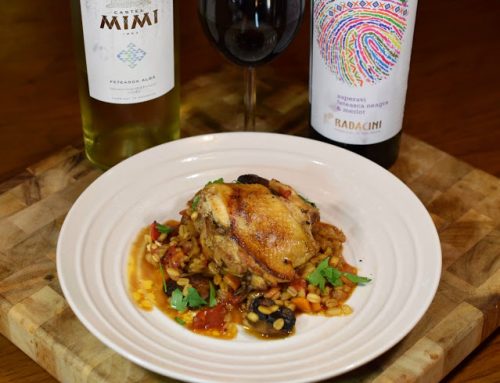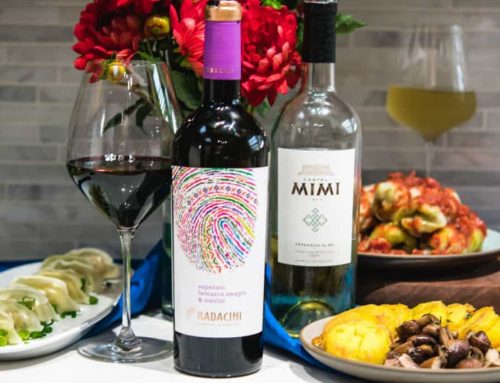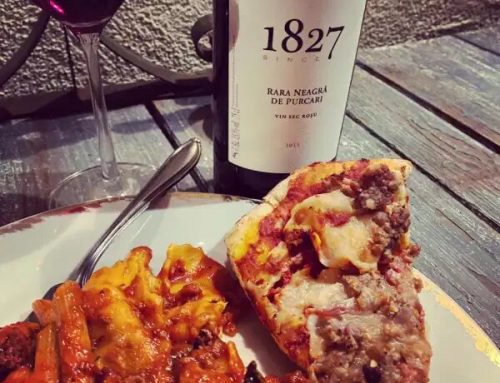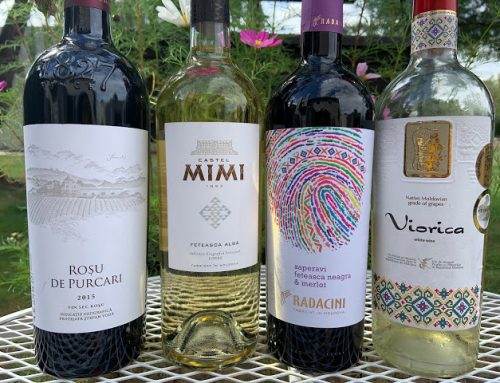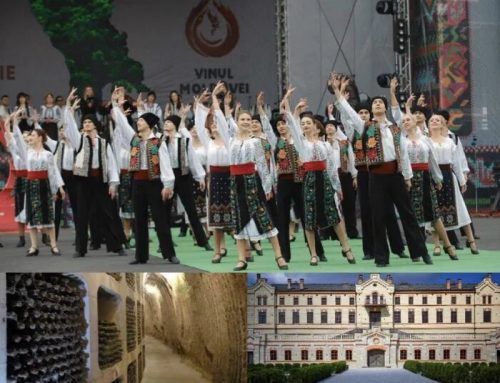Are you ready to sip a wine from a region so ancient and intriguing that it’s well on its way to being modern (again)? This month the #WinePW (Wine Pairing Weekend) crew, led by Jeff Burrows of Food, Wine, Click, are focusing their palates and research skills on the wines of Moldova and foods for pairing. (For my colleagues’ articles, see below.)
Moldova? That’s right. This small country of fewer than 4 million people is nestled in southeast Europe between Ukraine and Romania in the Black Sea Basin and has been producing wine for centuries. Its history begins in 3000 BC, although the first vines on record were around 7000 BC. Apparently, wine was used for bartering and as an award trophy after fights.

Photo Credit: www.wineofmoldova.com
Moldova has one of the highest density of vineyards as a percentage of total land of any country in the world. They have a long history of producing wine and were well known in prior centuries in the courts of both Russia and England. During the Soviet era, Moldova became a part of the Soviet Union and all privately owned land and companies were taken over by the state. Production was shifted to serve the workers, so quantity was emphasized and quality was not a major consideration. With the fall of the Soviet Union in 1991, Moldova’s vineyards and wineries were returned to private ownership, but it was a long, difficult road back to prosperity.
Today, Moldova’s wines have returned to earn a place in the international wine scene. In 2013, Moldova’s National Office of Wine and Vine and the partner wineries took on the challenge of establishing European approved protected geographical indications (PGI) labeling for the three major wine regions. Now there are plenty of IGT labeled wines available, with efforts now to establish Designated Origin (DO) labeling as approved by European authorities. Jeff Burrows in Could Moldova Be Your Next Wine Destination?
Moldova has a landscape of low hills, sunny plateaus and plains, and a fair number of streams that flow into the rivers, Prut and Dniester. The climate is moderately continental and is influenced by its location near the Black Sea. Thanks to its latitude of 46-47 degrees, Moldova is well suited for the production of quality red wines and in the central part of the country, white wines are dominant.


Rara Neagra – Photo Credit: Chateau Purcari
Indigenous varieties account for only 10% of the vineyards and express the “authenticity and uniqueness of Moldovan wines.” Native grapes are Feteasca Alba, Feteasca Regala, Feteasca Neagra, Rara Neagra, Plavai, Viorica and more. For fascinating information about the history, unique characteristics of the vineyards, winemaking practices and beyond, please visit the Wine of Moldova website here.
The wines of Moldova may be difficult to locate in the United States, but once you do, it’s worth the effort. I was sent three wines as samples and have been impressed with my first journey to this ancient country via my palate. Each winery has a special story and I encourage you to visit their websites linked below.
*310 Altitudine 2019 ($17.99) from Fautor Winery was as flavorful as it was refreshing. Of 80% Chardonnay and 20% Feteasca Regala, notes of lime zest, yellow florals and stone fruit including white peaches were prevalent on the nose and palate. The finish lingered on this balanced, full-bodied wine. Pair with a bountiful salad, rich appetizers, a favorite pasta dish or seafood with a white sauce or a luscious soup. (Of note is that Feteasca Regala was created in the 1930s in Romania and is a cross of Grasa and Feteasca alba varieties.)
The winery and vineyards are located in the Tigheci microzone, part of Valul lui Traian in the southern area of Moldova. Between 2003 and 2006, Fautor Winery embraced advanced technology and new vineyards were planted. Under vine is now 350 hectares. In 2017, 2018 and 2019, Fautor Winery was the most awarded Moldovan winery and everyone are proud of their “unique portfolio of rare varieties and world exclusive blends.”

From Gitana Winery, Rara Neagra 2018 ($22.99) is a lovely selection with delightful aromas of red berries, strawberries, raspberries and hint of pomegranate. On the creamy palate, intense flavors included an abundance of dried red and purple fruit, oak and touch of brioche. The wine was stored in large oak barrels from Krasnnodar for two years, then bottled in May 2020. Pair with pork or veal cutlets, a hearty stew or your favorite grilled dishes.
The history of family-owned Gitana Winery began in 1953 and by all accounts, their legacy continues. By 2017, the wines entered the Asian markets with exports to Japan, China and South Korea. That year also heralded the Autograph brand that includes Feasca Regala, Cabernet Sauvignon, Chardonnay and Merlot. In 2018, the winery announced the launch of three wines from the Young, White, Pink and Red Gitana brand. The family stated, “A family business represents longevity and steadfastness, things that are directly reflected in the work you do. Gitana wines are not just wine, but an inheritance, the fruit of a hard work that led to a flawless story.”

Purcari Winery has cellars constructed towards the end of the 19th century. Built in the style of a manor house where temperatures and humidity are consistent, the Purcari Vinotheque has the “best wines, where the prices start from $100 per bottle.” The oldest in the collection is from 1951.

As you may expect, foods from Moldova include those consistent with many Eastern European countries. Inspiration is derived from the cuisines of Romania, Russia, Ukraine, Poland, Greece and beyond. The menu of choices is rife with meat, potatoes and vegetables and of late, foods from Western countries can be seen on the table. For pairing with the wines above, I chose a traditional shish kebob recipe, but if you’re enticed by intriguing, more classic Moldovan dishes to try, click here.



